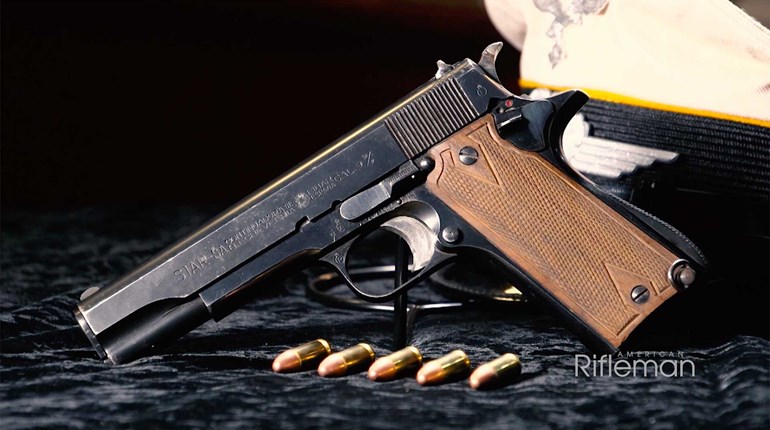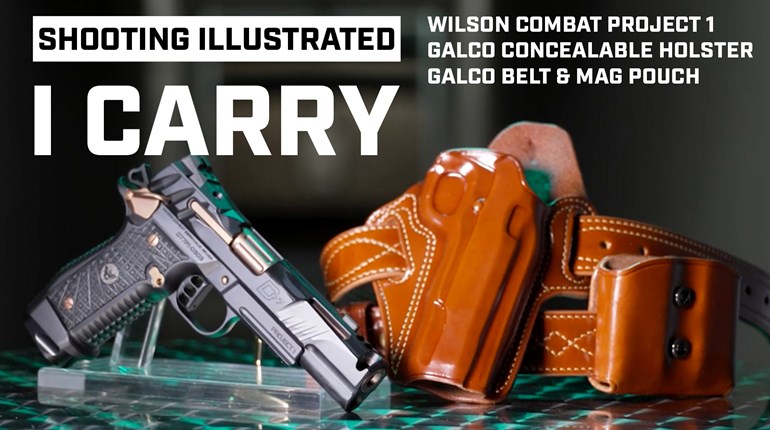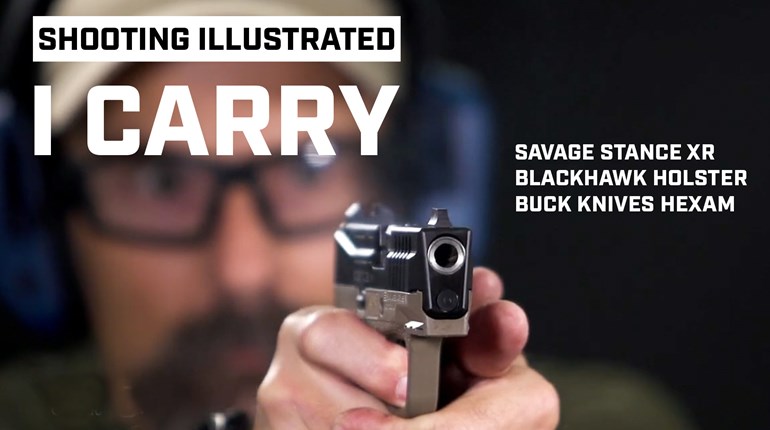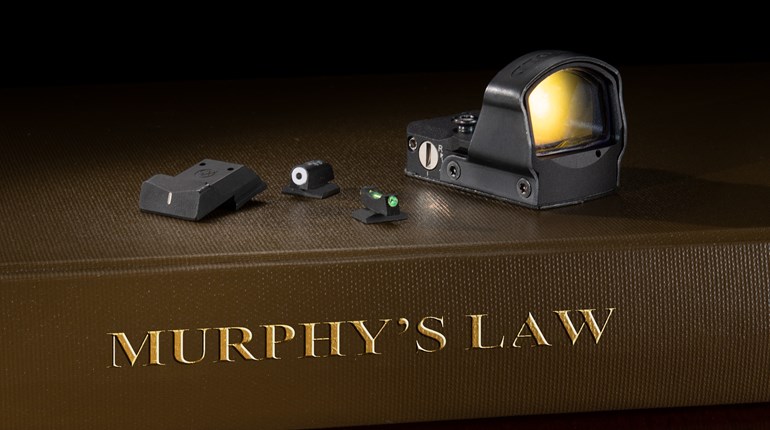We talk about “Compact” or “Full size” pistols quite often here on “I Carry,” and we wanted to devote an episode to explaining what some of these terms mean. Keep in mind that the terms used are general guidelines--they’re not set in stone--and some manufacturers might have slight differences. We’re going to cover four basic sizes of semi-automatic pistols; this is not the be-all, end-all guide, of course, but a quick overview. We’ll cover some advantages and things to consider for each size.
Full Size: The largest size in a particular family, “full size” may also be referred to as “duty size,” in that it’s the size most often used by police officers as part of their standard-issue gear. As a general rule, these pistols have a grip large enough for all three gripping fingers of the strong hand, with room to spare. Barrel length is generally 4 ¼ to 5 inches, and magazine capacity is generally 15 to 18 rounds when chambered in 9 mm. Just about all manufacturers offer a pistol considered full size.
Advantages of a full-size pistol are simply that it’s going to be the easiest to shoot. You have the most real estate possible on the grip, the most area available for the support hand, the longest sight radius and the most weight to absorb felt recoil. For pistols that are used as police issue, there’s going to be a robust market in accessories like holsters, spare magazines and upgraded components.
Disadvantages mainly center on the size, in that a full-size gun is going to be the hardest to conceal. That full grip that makes it easier to shoot also makes it harder to conceal under a shirt without printing (quick side note, for those that might not be familiar, printing refers to being able to see part of a concealed handgun, or an outline, under a cover garment). Longer barrels make it harder to conceal a full-size pistol in an outside-the-waistband holster, and when carried inside the waistband need the most room to move. The added weight that makes them so comfortable to shoot also makes them more of a drag to carry, since that extra weight on your hip all day is definitely noticeable.
Compact: Sometimes referred to as mid-size, Compact pistols are smaller than full size, obviously, but are less easy to define. As a general rule, a Compact pistol is going to allow a full firing grip for those with average-size hands—you’ll be able to get all three gripping fingers of your strong hand on the grip itself, although your pinky might be flush with the magazine floorplate. Barrel length is usually around 4 inches, and magazine capacity is generally 13 to 15 rounds. Most manufacturers offer a pistol that falls in the Compact range.
Advantages of the Compact are quite simple. The size allows the best compromise between concealability and shootability. You’re not giving up much in capacity – generally, Compacts tend to hold a couple rounds less than full-size handguns, while barrel length might be a quarter- to a half-inch shorter. This slight decrease is relatively unnoticeable in sight radius and projectile velocity. Also, in the vast majority of cases, a Compact pistol can make use of gear for the full size. Full-size magazines may protrude from the grip and there might be extra room at the end of a holster, but most manufacturers I am aware of design this intentionally.
Disadvantages of the Compact are few. A Compact will still be most comfortable carried inside or outside the waistband on a dedicated gun belt, so it’s not the best choice for deep concealment. Another area to consider doesn’t reflect on the pistol itself, but for manufacturers that offer a wider range of sizes: Make sure any gear you’re considering is intended for the exact model you own. If you’ve got the Blastomatic 2000 Compact, make sure you’re not getting the Blastomatic 2000 Mid-size gear if the two aren’t interchangeable.
Subcompact: Here’s where things get a little more complex. Not every manufacturer offers a subcompact version of its full-size and Compact offerings. Again, as a general rule, subcompacts are going to have barrel lengths 3 ½ inches or shorter and grips that leave your pinky finger curled under the magazine floorplate. Capacity is generally 10 to 12 rounds of 9 mm.
Advantages of subcompacts are that they’re easier to conceal than full-size or compact pistols. This size is often used as a backup, since it shares gear with the full-size variant, and can be carried in an ankle holster or deep concealment method with the greatest ease. The single biggest strength of the subcompact is that it keeps the same operating system of the larger gun you’re familiar with and use in practice.
Disadvantages center around the size, naturally. With the shorter grip, subcompact recoil is often considered “snappy” and can slow down follow-up shots. Shorter barrel lengths mean ammunition choices are critical and should center on cartridges designed for short barrels, and the diminished sight radius means less room for error in aiming.
Subcompact, single-stack: For a number of manufacturers, the subcompact size is left out of the lineup in favor of a subcompact, single-stack. This is a pistol that shares the same barrel length and grip height as a subcompact, but relies on a single-stack magazine rather than the double-stack of the standard subcompact. This results in a pistol that is slimmer, but holds fewer rounds – typically 6 or 7.
Advantages of the subcompact, single-stack are that this is generally the smallest size in a “major” caliber available; these pistols can often be carried in a pocket (with the right pockets of course). This size offers the greatest concealability in a substantial caliber.
Disadvantages are basically all of those that accompany the standard subcompact, with the added downside that none of the full-size, compact or subcompact gear will work for the single-stack, subcompact pistol. Magazines, holsters and other accessories will need to be specific for the single-stack. Also, the reduced capacity is a potential disadvantage if you ever have to use the gun for self-defense.
For information on specific manufacturers or to see gun and gear combinations, visit Shootingillustrated.com. And, as always, stay tuned for more episodes of “I Carry!”


























